CDL Practice Tests: Flatbed Cargo Securement
Choose A Section:
Go!In cargo securement, what is a 'cleat' defined as?
- Part of the structure, fitting, or attachment on a vehicle or cargo to which a tiedown is attached.
- A tapered or wedge-shaped piece used to secure round articles against rolling.
- A short piece of material, usually wood, nailed to the deck to reinforce blocking.
- A tapered piece of material, thick at one end and thin at the other.
Cleat:
A short piece of material, usually wood, nailed to the deck to reinforce blocking.
All of the following are requirements for dividing vehicles over 33ft except:
- Vehicle must be divided by center stakes into sections of staggered length.
- Each tiedown must secure the highest log on each side of the center stake.
- Vehicle must be equipped with center stakes or comparable devices.
- Each tiedown must be fastened below the logs on each side of the center stake.
Requirements for dividing vehicles over 10m (33 ft)
Vehicles over 10 m (33 ft) must be equipped with center stakes, or comparable devices, to divide it into sections of equal length.
Each tiedown must:
- Secure the highest log on each side of the center stake.
- Be fastened below these logs.
Which of the following can be used as part of the cargo securement system?
- Blocking and bracing equipment.
- All of these are valid.
- Securing devices.
- Vehicle structure.
What is a securement system?
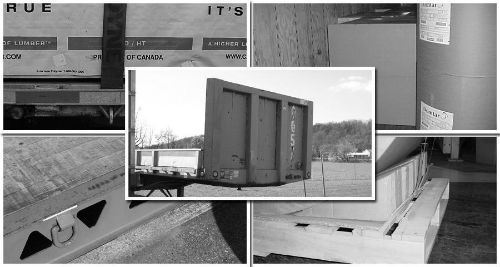
A securement system is a securement method that uses one or a combination of the following elements:
- Vehicle Structure.
- Securing Devices.
- Blocking and Bracing Equipment.
When securing concrete pipe with a diameter of more than 45 inches loaded crosswise, how many tiedowns are required through each pipe at minimum?
- 1
- 3
- 2
- It depends on the weight of the pipe.
Requirements for securing the pipe
Secure each pipe with tiedowns through the pipe.
Run at least one tiedown through each pipe in the front half of the load. This includes the middle one if there are an odd number. The tiedown must run rearward at an angle not more than 45° with the horizontal when viewed from the side of the vehicle, whenever practicable.
Run at least one tiedown through each pipe in the rear half of the load. The tiedown must run forward at an angle not more than 45° with the horizontal when viewed from the side of the vehicle, whenever practicable. This holds each pipe firmly in contact with adjacent pipe.
Requirements for securing a non-cubic shaped boulder with a stable base include all of the following except:
- Attach chains together at the intersection
- Pass the tiedowns over the center of the boulder
- Wrap chains around the circumference of the boulder.
- Secure each boulder individually with at least two chain tiedowns forming an X pattern over the boulder.
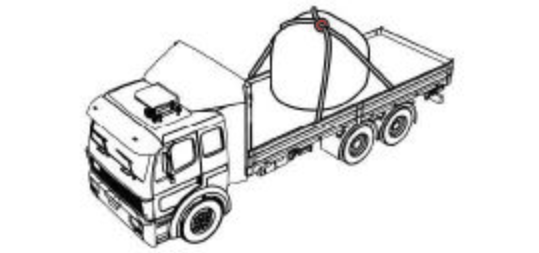
Secure each boulder individually with at least two chain tiedowns forming an X pattern over the boulder.
Pass the tiedowns over the center of the boulder and attach them to each other at the intersection by a shackle or other connecting device.
A female housing fixed to the side or ends of a vehicle to receive a stake or peg, and may also be used as an anchor point is a:
- Cleat
- Void filler
- Stake pocket
- Bulkhead
Stake Pocket:
A female housing fixed to the side or ends of a vehicle to receive a stake or peg, and may also be used as an anchor point.
Which of the following is not true of Working Load Limit (WLL)?
- The WLL is usually assigned by the component manufacturer.
- The Working Load Limit is the maximum load that may be applied to a component of a cargo securement system.
- The minimum WLL requirement for the securement system is 25%.
- All of these are true.
The Working Load Limit is the maximum load that may be applied to a component of a cargo securement system during normal service.
The WLL is usually assigned by the component manufacturer.
Note: The minimum WLL requirement for the securement system is 50%. More tiedown capacity should be used if you need to secure an article against any movement.
Which of the following is not a requirement of wood used as blocking or bracing?
- Hardwood is recommended.
- It should be properly seasoned.
- It should be painted.
- It should be free of decay and structural defects.
If wood is used:
- Hardwood is recommended.
- It should be properly seasoned.
- It should be free from rot or decay, knots, knotholes, and splits.
Which of the following is not a method of securing side-by-side cargo?
- Place them in direct contact with each other.
- Fill the empty space between with other cargo.
- Make sure it is leaning forward.
- Use some kind of blocking to prevent shifting.
For articles of cargo placed beside each other and secured by side-to-side tiedowns:
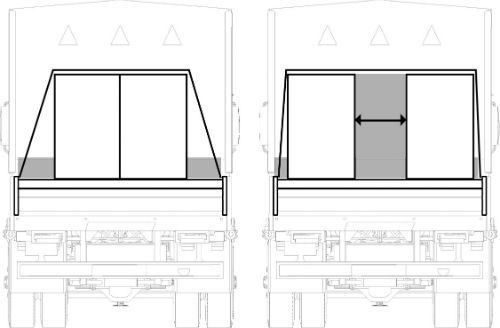
Either place them in direct contact with each other,
Or prevent them from shifting towards each other in transit by using blocking or filling the space with other cargo.
About The Flatbed Cargo Securement CDL Manual
Studying the flatbed cargo securement CDL manual is not a requirement for getting your CDL permit or license. It is required knowledge for flatbed drivers.
Some questions you should be able to answer for flatbed cargo securement:
- What is the minimum Working Load Limit of a tiedown used to secure logs?
- What is the minimum weight of a shipment of paper rolls that would require specific securement requirements?
- When securing concrete pipe over 45 inches loaded crosswise, which direction must the tiedowns on the front half of the load run?
- What is a cab shield?
- When securing concrete pipe over 45 inches loaded crosswise, which direction must the tiedowns on the rear half of the load run?
- What is a dunnage bag?
- Who is responsible for inspecting securing devices and cargo within the first 50 miles?
- How many tiedowns are required on a stack of shortwood loaded crosswise?
- What is the minimum working load limit of each tiedown used to secure crushed or flattened vehicles?
- Define 'bolster'
- What is a hook-lift container?
- When a tiedown is attached directly to the cargo, what is the ideal angle where it attached to the vehicle?
What is a securing device?
Any device specifically manufactured to attach or secure cargo to a vehicle or trailer:
- Synthetic Webbing
- Chain
- Wire rope
- Manila rope
- Synthetic rope
- Steel strapping
- Clamps and latches
- Blocking
- Front-end structure
- Grab hooks
- Binders
- Shackles
- Winches
- Stake pockets
- D-rings
- Webbing ratchet
- Bracing
- Friction mat
What is a tiedown?
A combination of securing devices that forms an assembly that:
- Attaches cargo to, or restrains cargo on a vehicle.
- Is attached to anchor point(s).
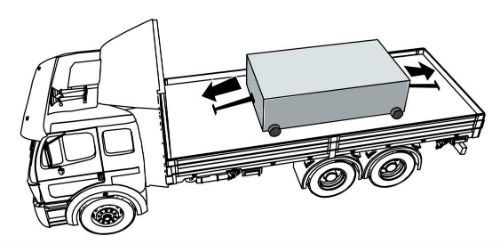
Some tiedowns are attached to the cargo and provide direct resistance to restrain the cargo from movement.
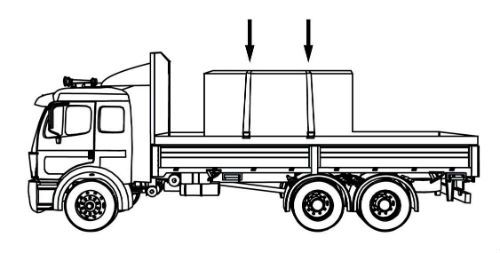
Some tie-downs pass over or through the cargo. They create a downward force that increases the effect of friction between the cargo and the deck. This friction restrains the cargo.
 Related Cargo Securement Terms That Every Driver Should Know:
Related Cargo Securement Terms That Every Driver Should Know:
-
Tiedown:
A combination of securing devices which form an assembly that attaches cargo to, or restrains cargo on, a vehicle or trailer, and is attached to anchor point(s).
-
Contained:
Cargo is contained if it fills a sided vehicle, and every article is in contact with or sufficiently close to a wall or other articles so that it cannot shift or tip if those other articles are also unable to shift or tip.
-
Blocking:
A structure, device, or another substantial article placed against or around an article to prevent horizontal movement of the article.
How should tiedowns be attached?
Tiedowns can be used in two ways:
-
Attached to the cargo:
- Tiedowns attached to the vehicle and attached to the cargo.
- Tiedowns attached to the vehicle, pass through or aroundan article of cargo, and then are attached to the vehicle again.
-
Pass over the cargo:
- Tiedowns attached to the vehicle, passed over the cargo, and then attached to the vehicle again.
Tiedown placement:

Place the tiedown as close as possible to the spacer.
Position the tiedowns as symetrically as possible over the length of the article.

Position the tiedowns to preserve the integrity of the article.






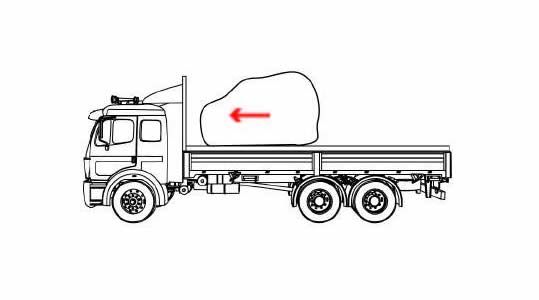

 TT On Facebook
TT On Facebook